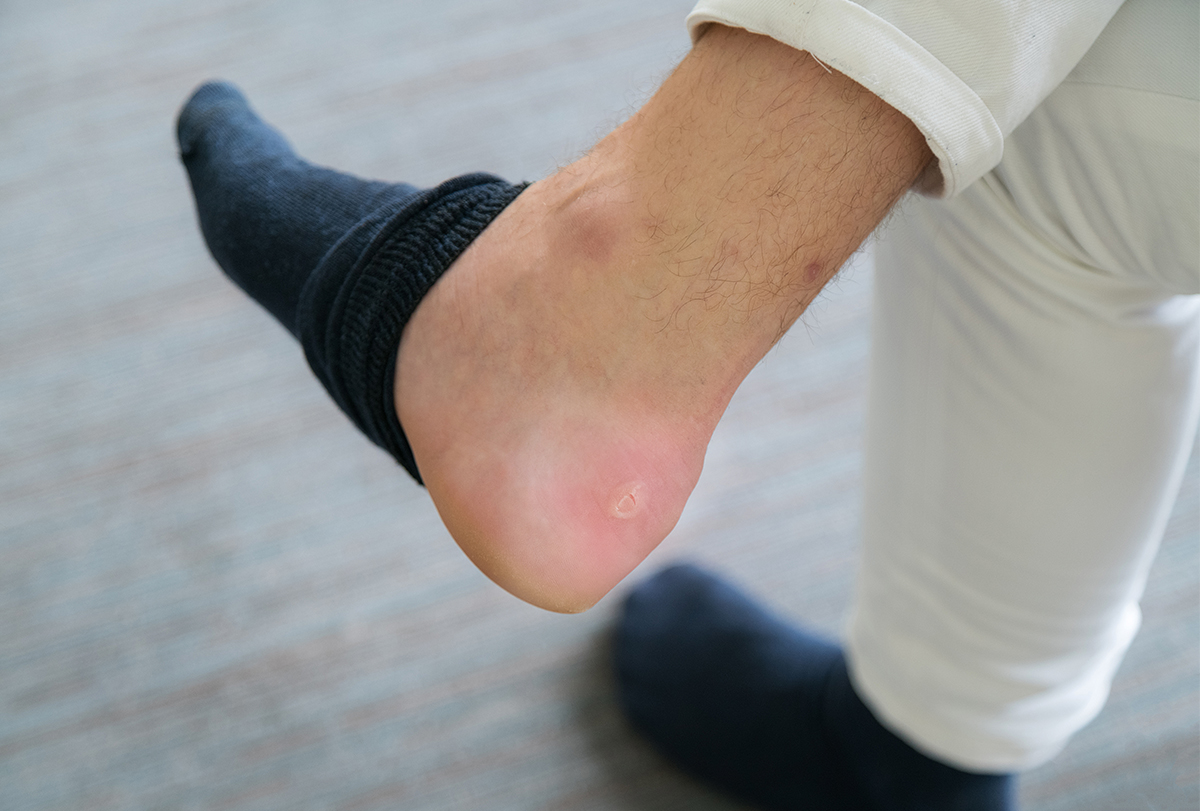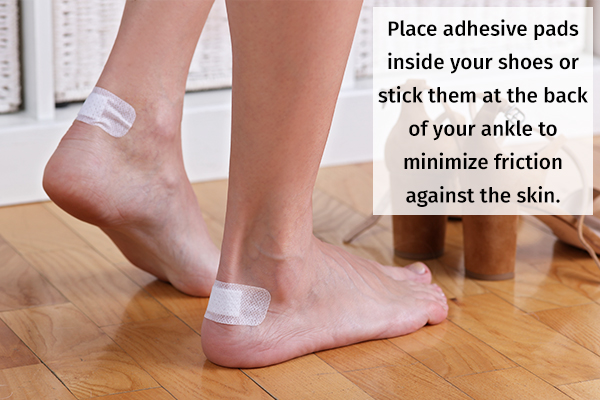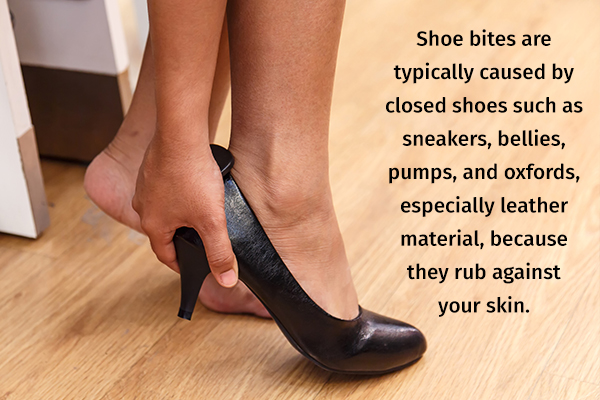In this article:
A shoe bite is an injury that occurs when the edges of your shoes rub against the feet, causing wear and tear of skin tissue. If left unattended, the relentless friction can further worsen the skin damage and can lead to blisters.

Shoe bites are painful enough to make it difficult for you to walk or even stand and often leave behind stubborn scars.
Causes of Shoe Bites
Most shoe bites are the result of wearing ill-fitting shoes that are either too tight or too loose for your feet such that their coarse border constantly rubs against your skin.
Brand new shoes are usually tight and have to be worn for a while to loosen their grip, while some people just pick the wrong shoe size. (1)
Treatment for a Shoe Bite
The standard treatment for a shoe bite is regularly cleaning the wound and then applying an antiseptic cream and bandage over it to prevent infections while the skin heals.
Also, you must wear open footwear instead of shoes for a while to avoid further friction against the injured skin and to provide proper ventilation to your feet. Sweaty feet breed infection-causing microbes and worsen the shoe bite sting.
However, if you have persistent sores or blisters on your feet that don’t respond to at-home treatment or develop signs of infection such as redness, swelling, and fluid discharge, you may have to consult a doctor.
Preventive Measures

Shoe bites can easily be prevented with the following steps:
1. Oil your shoes
Rub some oil, such as coconut oil, olive oil, or castor oil, on the inner fold of your shoes for a few days before wearing them.
2. Use adhesive pads
Place adhesive pads inside your shoes or stick them at the back of your ankle to minimize friction against the skin.
3. Break into your new shoes at home
Before going out in a new pair of shoes, try them on inside your home for a day or two to loosen them a bit before wearing them for long periods.
4. Wear socks
Another easy approach to decrease shoe abrasion is wearing socks. The thicker the sock you put on, the less friction you will experience.
5. Stick on a Band-Aid
Apply a Band-Aid, bandage, or skin-friendly white tape at the back of your ankle or any other area of the foot that might rub against the shoe border.
6. Apply some petroleum jelly
Apply a thick layer of petroleum jelly to your feet or the area that touch the shoe edges to help your new footwear glide smoothly against the skin.
7. Carefully choose your shoes
When buying footwear, always consider the design and size of the shoes, not just their appearance. Try them out in the showroom to see if they are comfortable to walk in.
Is There a Specific Type of Footwear That Causes Shoe Bites?

Shoe bites are typically caused by closed shoes such as sneakers, bellies, pumps, and oxfords, especially leather material, because they rub against your skin.
Final Word
Shoe bites are a common nuisance that can easily be avoided through some easy preventive measures, such as the ones mentioned above. The injury can give rise to a lot of discomfort and can take some time to heal.
Shoe bites make walking quite painful, thereby limiting your movement. Prevention can therefore save you a lot of distress.
- Was this article helpful?
- YES, THANKS!NOT REALLY


